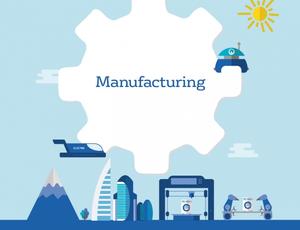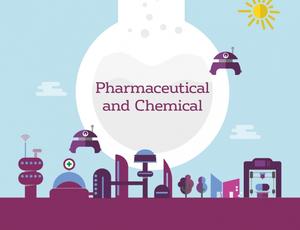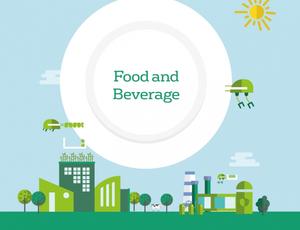From climate change to autonomous vehicles, the challenges we'll face in the next 35 years will stem from two key megatrends: population growth and advancing technology.
Together these will mean more people connecting in new ways, leading to an acceleration of ideas and innovation.
Trend #1 | Population growth
Continuing population growth will lead to environmental degradation and changes to how we manage and consume energy, water and food. It is estimated we will double our resources and energy consumption by 2050 if businesses don't change.
- Legislation to regulate
By 2050, advances in big data could lead to companies and governments having a firmer grasp on factors influencing CO2. This will make them better at reporting and managing emissions.
Before that we are likely to see changes in legislation. By 2020, COP21 commitments and the interim Kyoto Protocol CO2 targets will generate the realisation that we're not doing enough. We should already see emissions reducing but evidence suggests this isn't happening quickly enough.
The development of a clear, long-term policy framework is essential for companies looking to progressively invest in low carbon technologies. This will encourage businesses to focus on higher emission reducing activities and longer-term gains. - More people means more food
Food consumption will rise faster than population as the global middle class expands, leading to increased supply pressure and higher prices. We'll need to establish more dynamic, efficient and agile supply chains.
The pressure of requiring more food will lead to a more joined-up approach to managing water and energy use, creating a food, water and energy network. - Smarter ways to use space
Increasing urbanisation will mean a significant squeeze on space, affecting where and how we grow and manufacture. Growing cities will need industries to find more efficient ways of managing and moving urban water, energy and waste.
Denser populations within cities will need smart solutions. Japan is experimenting with innovative underground farming. A single 25,000 sq ft site currently produces 10,000 heads of lettuce every day. These space efficient farms use 40% less power, create 80% less food waste and use 99% less water than current practices. - Changes to healthcare
An ageing population, growing costs of treatment and new medical technology will shape the future of healthcare.
The department of Health and Human Services believes that in the next 35 years, artificial and lab-grown organs will create a more permanent solution for transplants. This means patients will no longer have to wait for life-sustaining organs. Scientists are already trying to grow human organs inside pigs in an attempt to tackle a shortage of donors.
Trend #2 | Advancing technology
New technology deliverables will be accelerated by more powerful computers, enabling us to find previously impossible solutions.
- 3D printing and nanotechnology
3D printing will become embedded into supply chains by 2050. The combination of nanotechnology and novel materials will lead to bespoke production lines. Today, tooling and production mobilisation accounts for 70% of production costs and this could be reduced to 10%. - New skills in the workforce
Robotics and the rise of artificial intelligence will replace many low skill and repetitive job roles. The wider industry impact will see human workforces reskilling and upskilling for the workplace. - Smarter solutions
Smart utility metering will be taken to a new level, with more intelligent and responsive systems.
Advanced new materials and narrowing gaps in international labour costs will create a level playing field for innovation.
The pharmaceutical industry will ensure better quality healthcare and the chemical industry will become a key enabler of emission reductions.
We need to revolutionise the way we source, produce and consume food to feed a growing population.





